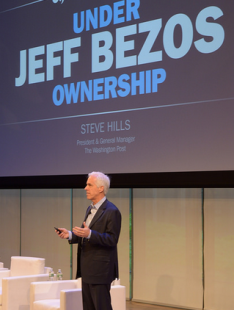Washington Post says publishers can have mass audience and paywall, but content needs to be discoverable
 The president of the Washington Post has downplayed concerns about the future of paywalls, telling a global forum of senior publishing executives that it is possible to achieve mass audience and a successful paid content strategy.
The president of the Washington Post has downplayed concerns about the future of paywalls, telling a global forum of senior publishing executives that it is possible to achieve mass audience and a successful paid content strategy.
“We are believers in paid content and the model,” Steve Hills, president of the Washington Post told the International News Media Association World Congress in New York. “Paid content was essential for 180 years in the print newspaper business and there is no reason that shouldn’t be true going forward.”
“The question has been do you want a big audience or a paid audience.
“(Our owner) Jeff Bezos has been asking why do you have to choose? You don’t have to choose, we have a big paid audience – and they are getting bigger every day – and we have a big overall audience. You can do both.”

